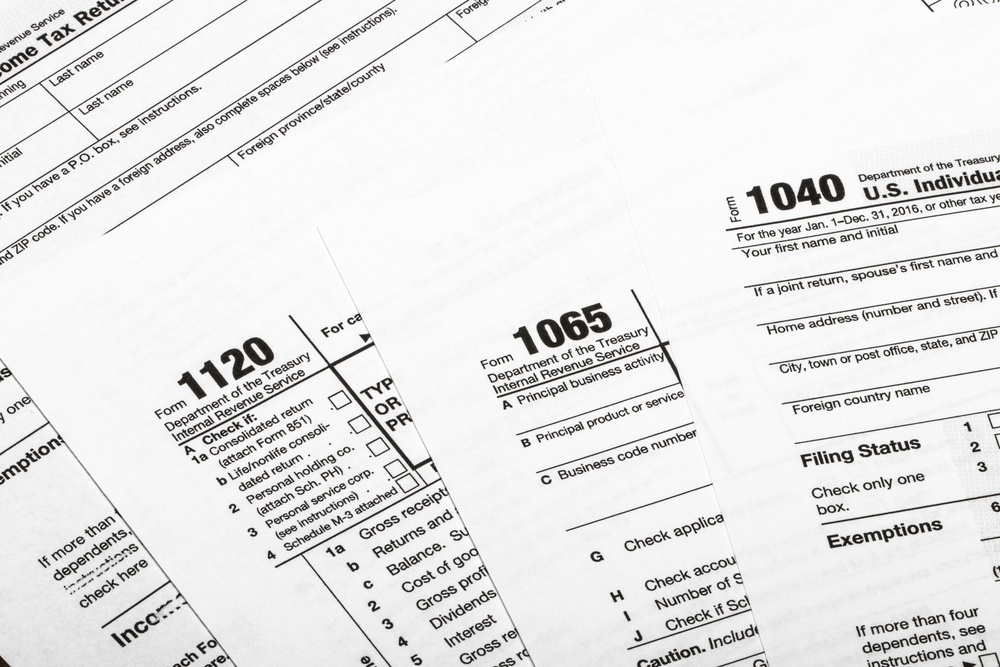Among the many write-offs available to self-employed individuals and small business owners is the mileage tax deduction. This deduction can be used by those who drive vehicles for business purposes, such as rideshare drivers or self-employed truck drivers. Although mileage deductions are also available for charity, medical use, or moving expenses, this guide will cover the mileage tax deduction for businesses. So, if you’re looking to write off car expenses using the mileage deduction method, you’ll need to confirm your eligibility and ensure you track your business mileage properly in order to be able to claim it. And, you’ll need to be aware of the mileage rate set by the IRS.
What is the IRS standard mileage rate for 2023?
The IRS standard mileage rate for 2023 per mile driven for business purposes is 65.5 cents.
The 2023 standard mileage rates for the use of a vehicle for all eligible purposes will be:
- 65.5 cents per mile for business purposes
- 22 cents per mile driven for medical or moving purposes for qualified active-duty members of the Armed Forces
- 14 cents per mile driven for charitable organizations
The above mileage rates apply to all miles driven in the 2023 calendar year, meaning they apply to taxes being filed in 2024.
The mileage rates used to calculate deductible costs are set by the IRS each year. Below are the mileage rates for business purposes from previous years:
| Year | Mileage Rate (cents per mile) |
|---|---|
| 2022 | 58.5 (January to June) & 62.5 (July to December) |
| 2021 | 56 |
| 2020 | 57.5 |
| 2019 | 58 |
| 2018 | 54.5 |
| 2017 | 53.5 |
| 2016 | 54 |
| 2015 | 57.5 |
| 2014 | 56 |
| 2013 | 56.5 |
| 2012 | 55.5 |
| 2011 | 51 |
IRS announces mileage rates for 2024
On December 14, 2023, the IRS issued the standard mileage rate for 2024, which will be 67 cents per mile for business use, up 1.5 cents from 2023. This rate will apply beginning on January 1, 2024.
The standard mileage rates for the use of a vehicle for all eligible purposes will be:
- 67 cents per mile for business purposes
- 21 cents per mile driven for medical or moving purposes for qualified active-duty members of the Armed Forces
- 14 cents per mile driven for charitable organizations
Who is eligible for the mileage tax deduction?
Though similar to the actual expenses method of writing off business-use of a vehicle on taxes, the mileage deduction has a few more nuances regarding eligibility:
1. You must be self-employed
If you are self-employed, you can check off this first qualification! However, if you are considered an employee for tax purposes, you may not claim this deduction and must instead seek reimbursement from your company for business-related vehicle expenses.
2. You must own or lease the vehicle personally
The mileage deduction exists to aid self-employed individuals in deducting a portion of a personally owned vehicle on their taxes, thus it is not available if your business owns the vehicle. In that situation, the entire vehicle can be written off on taxes so long as it is strictly used for business-related transportation.
Keep in mind that if you are leasing a vehicle and opt to use the mileage deduction method to write it off, you must continue doing so for the full lease term.
3. This must be the first year claiming the vehicle
You are only eligible to use the mileage deduction the first year you write off a personal vehicle for your business. If you’ve previously claimed your vehicle using the actual expense method, you can’t go back to the mileage method later.
4. You may be disqualified by other IRS claims
The IRS has a list of other claims that businesses can make on their taxes that render them ineligible for the mileage deduction. To use the mileage deduction method, you may not:
- Have five or more cars for business use at the same time (such as with a fleet operation)
- Have ever used any method other than straight-line to claim a depreciation deduction for the car
- Have claimed a Section 179 deduction for the car (in other words, you cannot claim the car as a full business expense, as with an LLC-owned car)
- Have claimed the special depreciation allowance for the car
- Have claimed a leased vehicle using the actual expense method after 1997
If you are eligible for this small business tax deduction, there is no limit to how much mileage you can claim! If you drove the miles for business and tracked them properly, you can claim them.
Calculating standard mileage vs. actual expenses
There are two methods by which you can write off a personal vehicle for business use: the standard mileage method we are discussing here, and the actual expenses method. Whereas the actual expenses method involves adding up all car-related costs and deducting a percentage of the total based on how much the car was used for business, the mileage method is typically more accurate and requires more detailed tracking.
The mileage tax deduction is based on a standard amount you can claim per mile driven, as set by the IRS each year. This standard amount is set according to current and projected gas prices, maintenance costs, and depreciation, which means you can’t individually claim any of these as part of your vehicle deduction.
If you’re not sure which method is best for your business, ask a CPA to help you come up with a plan of action! If you haven’t been tracking your mileage for business use of your car, the actual expenses method may be more practical. That said, locating all of your receipts can be quite the challenge, making it preferable to attempt to sort out the mileage retroactively.
How to track mileage for taxes
So long as you are able to maintain an accurate record to help you calculate your deduction and back up your mileage claim, you can use whatever method works best for your business. There are several free and inexpensive mileage tracking apps available, or you may opt to keep a written record of miles as part of a self-employment ledger.
Your mileage record should track all business-eligible mileage, meaning any time the vehicle is being used specifically for business purposes. This does not include miles used to run personal errands or while commuting to your base of operations. Include the following information on your mileage tracker:
- Date
- Start and end locations
- Purpose of the drive
- Any tolls or parking fees acquired
- Total mileage for the specific trip
Also track the total miles you drove that year by marking the odometer reading at the start of the year and then again at the end of the year. Doing this makes it easy to subtract your business mileage and get your personal mileage for the year.
How to calculate mileage for taxes
To calculate your mileage tax deduction and reduce your taxes, use this formula:
(Business Mileage x Mileage Deduction Rate) + Parking Fees + Tolls
Using the 2023 mileage rate (for taxes filed in 2024), the formula looks like this:
(Business Mileage x $0.655) + Parking Fees + Tolls
Applying the 2024 mileage rate (for taxes filed in 2025), the formula looks like this:
(Business Mileage x $0.67) + Parking Fees + Tolls
Example #1: Rideshare Driver
As a rideshare driver for Uber or Lyft, your vehicle is an integral part of your self-employment income. Because you may treat your driveway as the base of operations, you may not include your first drive of the day (from your home to your first passenger), as this is considered a commute.
Bearing this in mind, a rideshare driver working full-time can easily drive 50,000 miles per year. For the purposes of this example, let’s assume our driver drove 50,000 miles during the year. Since parking and tolls are typically billed to the customer, these are not claimable by Uber or Lyft drivers. Here is the resulting calculation:
(50,000 x $0.655)
= $32,750 total deduction for mileage
Example #2: Trucking Company
Trucking companies are only eligible if their drivers are independent contractors who own their vehicles personally. Owner-operator truck drivers drive an average of 101,000 miles per year, so the average deduction amount for 2023 is calculated as follows:
(101,000 x $0.655)
= $66,155 total deduction for mileage
Example #3: Wedding Photographer
Much of the mileage accumulated by a wedding photographer occurs driving to weddings or meetings with clients. Of course, this can get complicated as mileage accumulated when driving from your home to a wedding may be considered commuting miles and therefore not tax deductible. If you have a photography studio you work from, this easily resolves the issue, but keep in mind that there’s a risk of commuting miles disqualifying those larger trips, so it’s important to ensure you can produce support documentation for larger trips to prove they qualify as deductible. You may also consider asking an accountant about how best to deduct your car expenses.
Summer is usually the busy season for photographers, so if a wedding photographer booked several weddings in the spring and early summer that dwindled off in the fall and winter, resulting in 3,000 miles before July 1 and 1,000 after, as well as having spent $150 on parking and tolls for various wedding-related trips:
(4,000 x $0.655) + $150
$2620 + $150
= $2,770 total deduction for mileage
Mileage deduction FAQs
Use Lili to organize your business tax deductions
Whether or not the mileage method will earn you greater tax savings than the actual expense method depends largely on how much your vehicle costs as a whole this year. For instance, if your car required significant repairs or new tires this year, the actual expense method could result in a higher deduction. Whatever method you choose, tracking all of your business expenses properly is crucial to preparing your taxes properly and accounting for every possible tax deduction for your business.
With Lili’s Tax Preparation software, you’re able to instantly and easily categorize your expenses and income as you go, streamlining your tax prep work in advance. So, when you arrive at tax season, you’ll be ready to hand everything off to your accountant for review (including a list of your business tax deductions!), or confidently file your business taxes on your own without having to scramble to get everything together last minute!




